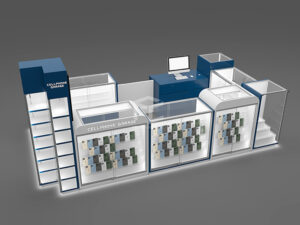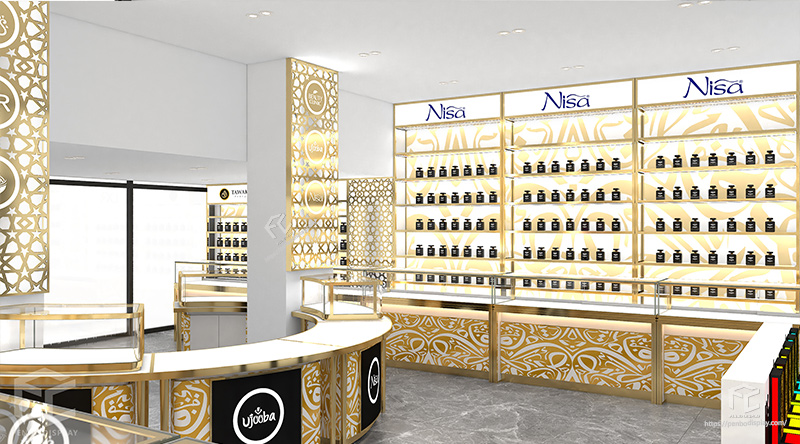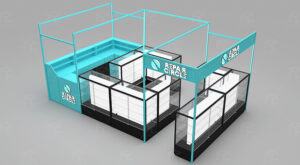
How profitable is a fragrance store?
Opening a fragrance store can be a lucrative business venture, especially when focusing on high-end and custom fragrances. This article explores the profitability of fragrance stores, supported by relevant statistics and insights.
Market Overview
The global fragrance market is thriving, with a significant portion dedicated to high-end and custom fragrances. In 2022, the global fragrance market was valued at approximately $50.85 billion and is expected to grow at a compound annual growth rate (CAGR) of 5.9% from 2023 to 2030. This growth is driven by increasing consumer demand for luxury and personalized products.
High-End Fragrance Stores
Profit Margins: High-end fragrance stores typically enjoy profit margins between 45% and 60%. The premium pricing of luxury perfumes, which can range from $150 to over $500 per bottle, contributes to these high margins.
Market Size: The luxury fragrance market alone was valued at around $15 billion in 2022 and is projected to grow at a CAGR of 6.5% from 2023 to 2030. This segment attracts affluent customers who are willing to pay a premium for exclusive and high-quality fragrances.
Customer Demographics: The primary target market for high-end fragrance stores includes affluent individuals seeking premium and designer labels. These customers value exclusivity and are often loyal to brands that offer unique and luxurious products.

1. Location
The location of your store plays a crucial role in its success. A store in a high-traffic area such as a popular shopping mall or a tourist district tends to have higher sales volumes compared to one in a more secluded area. However, the cost of rent in prime locations can also be significantly higher, which impacts overall profitability.
2. Target Market
Identifying and catering to the right target market is essential. Luxury fragrance stores targeting affluent customers can command higher prices and margins but may experience lower sales volumes. Conversely, stores offering mid-range or budget fragrances might have higher volumes but lower margins.
3. Inventory Management
Effective inventory management is critical to profitability. Overstocking can lead to higher holding costs and potential losses from unsold inventory, while understocking can result in missed sales opportunities. Managing inventory efficiently helps maintain a balance and reduce wastage, particularly of perfumes, which have a shelf life.
4. Supplier Relationships
Building good relationships with suppliers can lead to better purchase prices, favorable terms, and exclusive product offerings, all of which can enhance profitability. Being able to source unique fragrances that competitors don’t carry can also be a significant advantage.
5. Marketing and Branding
Effective marketing and strong branding can attract more customers and allow for higher pricing strategies. A well-branded fragrance store that successfully positions itself as selling high-quality or exclusive products can achieve higher margins.
6. Operational Costs
The operational costs, including rent, utilities, employee salaries, marketing, and insurance, need to be managed carefully. High operational costs can quickly erode margins. Employing strategies such as energy-efficient store designs and cost-effective marketing tactics can help in controlling expenses.
7. Online Presence
Expanding sales channels to include an online store can significantly boost profitability. Online sales reduce the dependency on foot traffic and can reach a broader customer base. Additionally, operating costs for online sales are generally lower than those for brick-and-mortar stores.
8. Customer Loyalty Programs
Implementing loyalty programs and customer retention strategies can enhance profitability by increasing the lifetime value of customers. Repeat customers typically cost less to serve and can become advocates for your brand.
Financial Example
Consider a fragrance store with an average profit margin of 20% on its products. If the store generates $300,000 in annual sales, the gross profit would be $60,000. From this, operational costs such as rent ($24,000), salaries ($20,000), and other expenses ($10,000) need to be deducted, leading to a net profit before taxes of $6,000.
Conclusion
The profitability of a fragrance store depends significantly on how well the business is managed in terms of location, target market, cost control, inventory management, and marketing. By focusing on these areas, a fragrance store owner can increase the likelihood of achieving a profitable and sustainable business.
Share:
Shop Fixtures Manufacturer
We are a manufacturer of display products established in 1995 in Guangzhou, China. We specialize in a wide range of retail store fixtures,including display case,showcase,racks,counters,stands , etc. Providing customers with one-stop merchandising solutions.
Recent Posts
Subscribe to Newsletter
Get all the latest information on shop design ideas, sales and offers. Subscribe to the newsletter:


